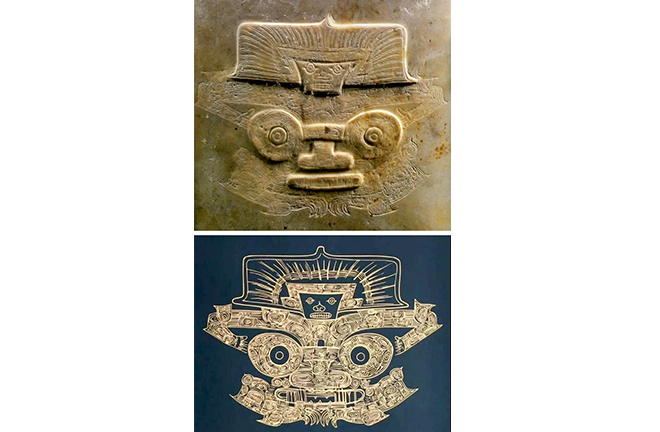Liangzhu ritual motif

FILE PHOTOs: The mysterious “man-animal mask motif” found among Liangzhu jade objects (above) and a rubbing (below) of this motif
Dating back to between 5,300 and 4,300 years ago, the Archaeological Ruins of Liangzhu City are renowned for their exquisite jade artifacts and magnificent water conservation systems. The Liangzhu culture is distinguished by its remarkably sophisticated jade sculptures, which laid the groundwork for the traditions associated with Chinese rites and the use of ritual vessels.
Most of the Liangzhu jade items are embellished with highly stylized zoomorphic masks, known as the “man-animal mask motif.” The most common interpretation of these motifs is that of a shaman riding an animal. Each motif features a face carved into a reverse trapezoid shape, with distinct oval or swirling patterns encircling two sockets, and tiny triangles attached to the sockets representing the corners of the eyes. The figure is depicted wearing large headwear presumably made of feathers, while riding on an animal with hands resting on its back. The animal, with its eyes open wide, bears a similar nose and mouth to its rider. The two pairs of fangs protruding from its mouth distinguish the animal from the rider, giving the animal an oddly menacing look. In addition to jadeware, motifs themed on the man-animal mask are also incised on some ivory objects, lacquerware, and pottery.
Certain scholars posit that the prominent round eye featured in the motif symbolizes the sun, revealing the agricultural population’s reverence of the sun god. It was customary for prehistoric societies to carve “eyes” onto religious totems and decorations, representing the communication between gods and humans.
Edited by REN GUANHONG
